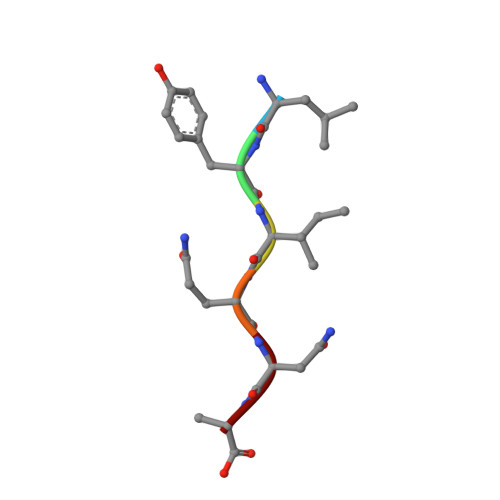Solvent induced amyloid polymorphism and the uncovering of the elusive class 3 amyloid topology.
Durvanger, Z., Bencs, F., Menyhard, D.K., Horvath, D., Perczel, A.(2024) Commun Biol 7: 968-968
- PubMed: 39122990
- DOI: https://doi.org/10.1038/s42003-024-06621-8
- Primary Citation of Related Structures:
8QWU, 8QWV, 8QWW - PubMed Abstract:
Aggregation-prone-motifs (APRs) of proteins are short segments, which - as isolated peptides - form diverse amyloid-like crystals. We introduce two APRs - designed variants of the incretin mimetic Exendin-4 - that both display crystal-phase polymorphism. Crystallographic and spectroscopic analysis revealed that a single amino-acid substitution can greatly reduce topological variability: while LYIQWL can form both parallel and anti-parallel β-sheets, LYIQNL selects only the former. We also found that the parallel/anti-parallel switch of LYIQWL can be induced by simply changing the crystallization temperature. One crystal form of LYIQNL was found to belong to the class 3 topology, an arrangement previously not encountered among proteinogenic systems. We also show that subtle environmental changes lead to crystalline assemblies with different topologies, but similar interfaces. Spectroscopic measurements showed that polymorphism is already apparent in the solution state. Our results suggest that the temperature-, sequence- and environmental sensitivity of physiological amyloids is reflected in assemblies of the APR segments, which, complete with the new class 3 crystal form, effectively sample all the originally proposed basic topologies of amyloid-like aggregates.
Organizational Affiliation:
Laboratory of Structural Chemistry and Biology, ELTE Eötvös Loránd University, Pázmány Péter sétány 1/A, H-1117, Budapest, Hungary.














